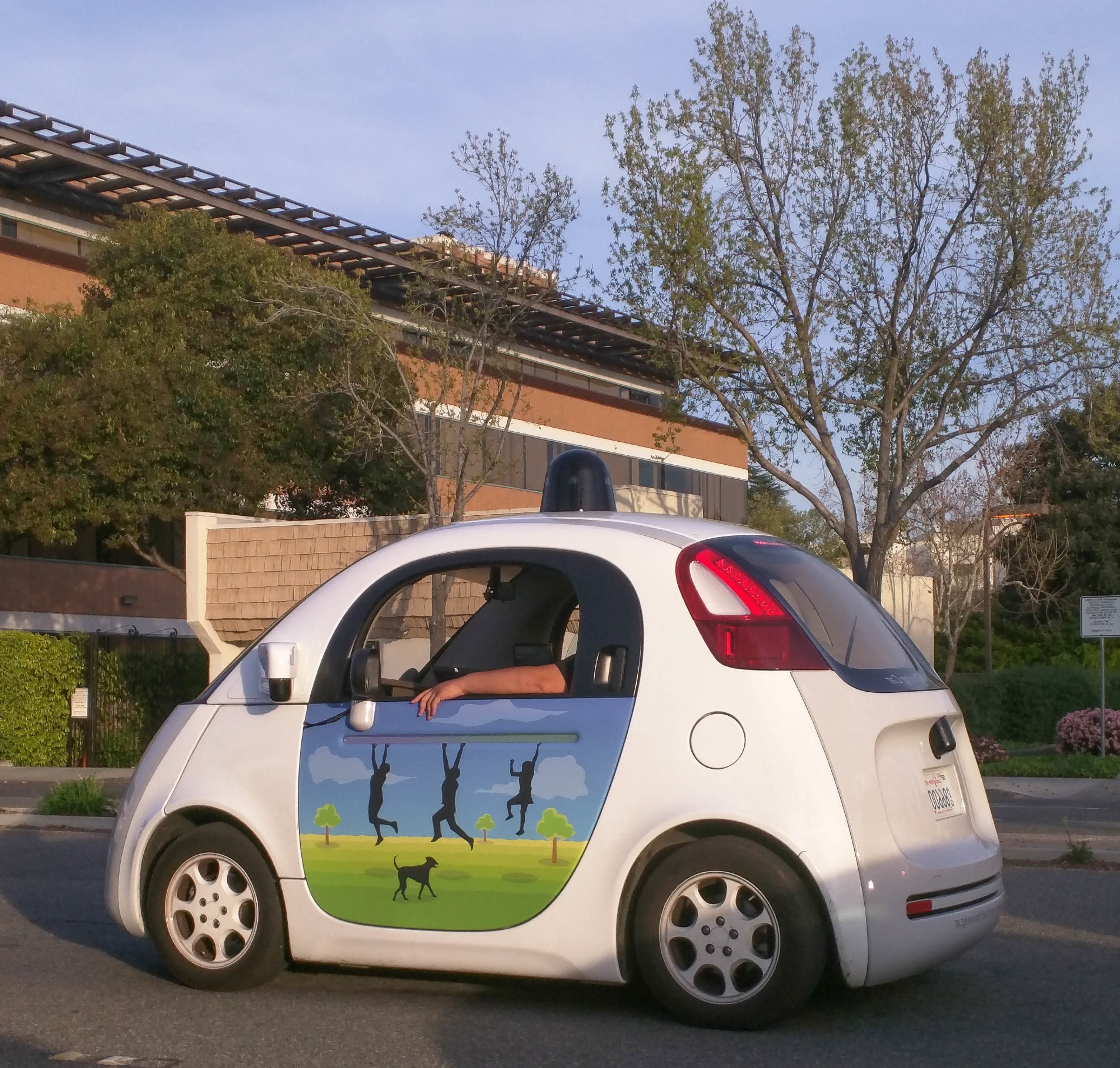Global climate collapse is coming closer by the day. Scientists warn that the world must radically reduce CO2 emissions by 2030. Otherwise, sea levels will rise and thousands of species will die out, with devastating consequences for the ecosystem. Warming threatens the survival of mankind. How do we get this under control?
Transport is a key problem in the fight against global warming. The Dieselgate scandal served as a reminder that even industrial countries like Germany are dependent on dirty technologies. Governments across the globe are pondering climate action. This week, leaders meet at the COP24 climate summit in Katowice. Alas, according to tech companies and car makers, there is a simple solution: innovation.
The makings of a revolution
Self-driving cars promise nothing less than a revolution. A recent report by the European Commission talks of the end to traffic jams and accidents, and lauds the prospect of simple mobility for all. An efficient fleet of autonomous and electric cars shall replace the avalanche of cars now rolling through cities.
„A combination of decarbonised, decentralised and digitalised power, more efficient and sustainable batteries, highly efficient electric powertrains, connectivity and autonomous driving offers prospects to decarbonise road transport“, the EU Commission notes in its brand-new 2050 climate strategy.
For autonomous driving to be sustainable, vehicles would have to be shared on almost all journeys. In this scenario, the number of cars on the road would be cut to a tenth. Human driving will be abolished. „In 20 years‘ time, we will only be allowed to drive with a special permit,“ German Chancellor Angela Merkel said last year.
Between heaven and abyss
Environmentalists consider the climate-friendly vision of autonomous driving to be only one of two conceivable ends. But such hopes for climate heaven could easily give way for the abyss.

„Autonomous hell scenario: self-driving cars remain privately owned, and they run on internal combustion engine“, says transport expert Yoann Le Petit from the environmental NGO Transport & Environment in Brussels. „Because of the convenience of autonomous cars (you don’t need to find a parking spot and the vehicle is always available) vehicle kilometres increase (many vehicles drive around empty) and so do congestion, noise levels, and emissions. There’s less space available for other modes or for social activities.“
Tech companies and the car industry have been lobbying for autonomous driving for years. This is about big environmental promises, but also about money. In the future, more people will share fewer cars while using self-driving taxis, Uber wrote in an email to the European Commission last year. The ride-sharing service argues that autonomous cars will lead to lower emissions.
The EU Commission is is happy to reproduce such arguments, as newly disclosed documents show. Thus figures from a Boston Consulting Group report easily find their way into EU policy statements, as an investigation by journalist Peter Teffer for euobserver revealed. Officials in Brussels recently discussed autonomous driving with Uber and Google, but also with VW, Scania and lobbyists from several other companies.
The market of the future
The interest in self-driving cars is immense. As early as 2021, companies want to put fully-autonomous driving technology on the road. The Google subsidiary Waymo is launching the first commercial robo-taxi service in the US. Uber has been testing autonomous taxis in California, Arizona and Pennsylvania since 2016. Several other companies pursue ambitious goals.
The companies sense a historic opportunity. The consulting firm Strategy Analytics guesses that autonomous driving services will achieve a turnover of seven trillion US dollars by 2050, i.e. 7,000 billion dollars. Hardly any other innovation promises to be so profitable. But it could have terrible consequences for the environment.
Calculation with many unknowns
The companies swat away ecological concerns: Autonomous driving is safe, clean and inexpensive for the consumer, they insist. In their correspondence with the Commission, representatives of Uber refer to a calculation done by US researchers. Their study assumes that the use of vehicles will be mostly shared. Bundled with other positive effects of autonomous cars, such as driving at a fuel-optimal speed, the technology is set to dramatically reduce energy consumption.
However, there are many unknowns. It is still unclear how quickly electric cars become dominant and how clean they really are. As environmentalists note, electric cars are not climate-neutral considering their CO2 emissions from production and power generation. An electric vehicle of the Tesla Model S type with a 100 kWh battery has a CO2 footprint comparable to that of a small petrol car, says traffic expert Le Petit in Brussels.
Car companies switch to stubborn
It is also still uncertain whose vision of autonomous driving will prevail. There are two completely different concepts among would-be market leaders. Driving services such as Uber and Google’s Waymo bet on fully autonomous taxis and shared mobility.

Traditional car companies don’t think much of that. „Ford’s not planning on a future where it doesn’t sell more cars“, CEO Jim Hackett recently said. Although Ford might offer ride-sharing in cities, it wants to continue to sell cars for personal use.
However, only shared mobility will be sustainable in the long run. Researchers believe that autonomous taxi services can reduce the demand for cars in the future. But how long will the transition period be? According to forecasts, we have at best one or two decades to take effective measures against catastrophic global warming. The NGO Transport Environment states in a recent report that emissions from transport in Europe must be reduced by at least 60 percent by 2030 if the Paris climate targets are to be met.
So time is of the essence. Meanwhile, companies sell cars.
Driving in circles
Some studies suggest self-driving cars could actually increase traffic in the medium term. A Boston-based study concluded that autonomous taxis in cities are likely to hurt public transport and worsen congestion.
A German researcher has similar concerns. „Old people, for example, will again dare to travel long distances by car,“ says Tilman Bracher of the German Institute of Urban Affairs. In the future, drivers will no longer have to be able to drive, whereas today at least one third of the population is too young to drive or does not have a driving license.
The spread of autonomous cars could hurt transport infrastructure. „If autonomous cars are allowed to drive without a quota, public transport will certainly be cannibalised“, says Bracher. Individual journeys must therefore be limited by tolls and other means.
Meanwhile, autonomous driving raises urban planning challenges. In test runs, the technology works well where cars are separated from the rest of traffic. This may be easy in US suburbs, but how does it work in the maze of alleys in European city centres? It is possible that autonomous cars will push to convert our cities along American lines – cities made for cars.
The struggle for regulation
Legislators already have set their sights on self-driving technology. In Brussels, the issue has been on the political agenda since 2015. The Commission has since supported research into autonomous driving and digitalisation of transport. Many questions remain unanswered, but the EU Commission plans to set the first technical standards by summer 2019.
Further steps are in preparation. The EU Parliament plans to adopt a report on autonomous driving in January. The paper has no legislative weight, but it sets the direction for the coming years. It states that the EU must „encourage and develop autonomous mobility“. Environmental issues are mentioned only in passing, the word climate not at all.
The paper only touches on other big questions: road safety of autonomous vehicles, data protection and IT security, but also the social impact of radical change. After all, autonomous cars could make thousands of taxi drivers and professional drivers in Europe redundant.
Lobbying instead of real knowledge

So far, there has been a lack of research into the impact of autonomous driving, said Finnish MEP Merja Kyllönen. „People need to be educated, and us decision makers need to be able to make decisions based on real knowledge about the issues.“
Car-makers have long called for a European framework for autonomous driving. „The EU has an important role to play in preventing countries from creating a patchwork of rules and regulations that prevent investment,“ said Erik Jonnaert of the European Automobile Manufacturers‘ Association back in 2016.
Industry groups are vying for influence. Lobbying on autonomous driving could even top car-maker mobilisation against higher CO2 limits. And yet, if only large corporations have their way, this could have devastating effects on the environment and public transport.
Solutions we know already
Even if self-driving cars are promising, they are not the only answer to the pressing ecological questions of coming decades. Climate change will force us to use resources much more carefully than before. This means the most sustainable solution in the long run is to quit cars almost completely.
Innovation can be part of the solution, but is not the game-changer it is made out to be. In fact, the sustainable transport technologies of the future have been around for a long time. They are called bicycles and trams.





0 Ergänzungen
Dieser Artikel ist älter als ein Jahr, daher sind die Ergänzungen geschlossen.